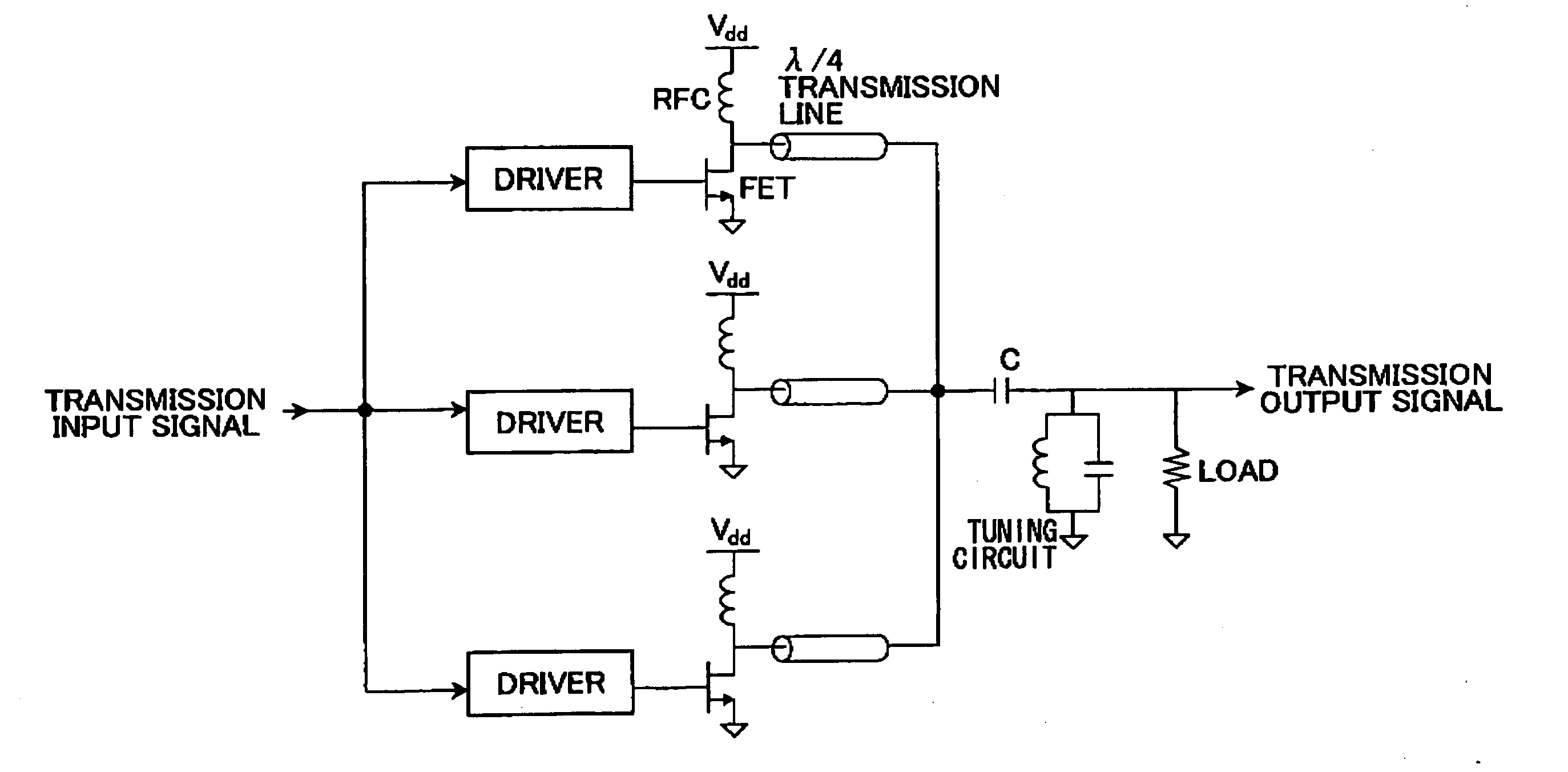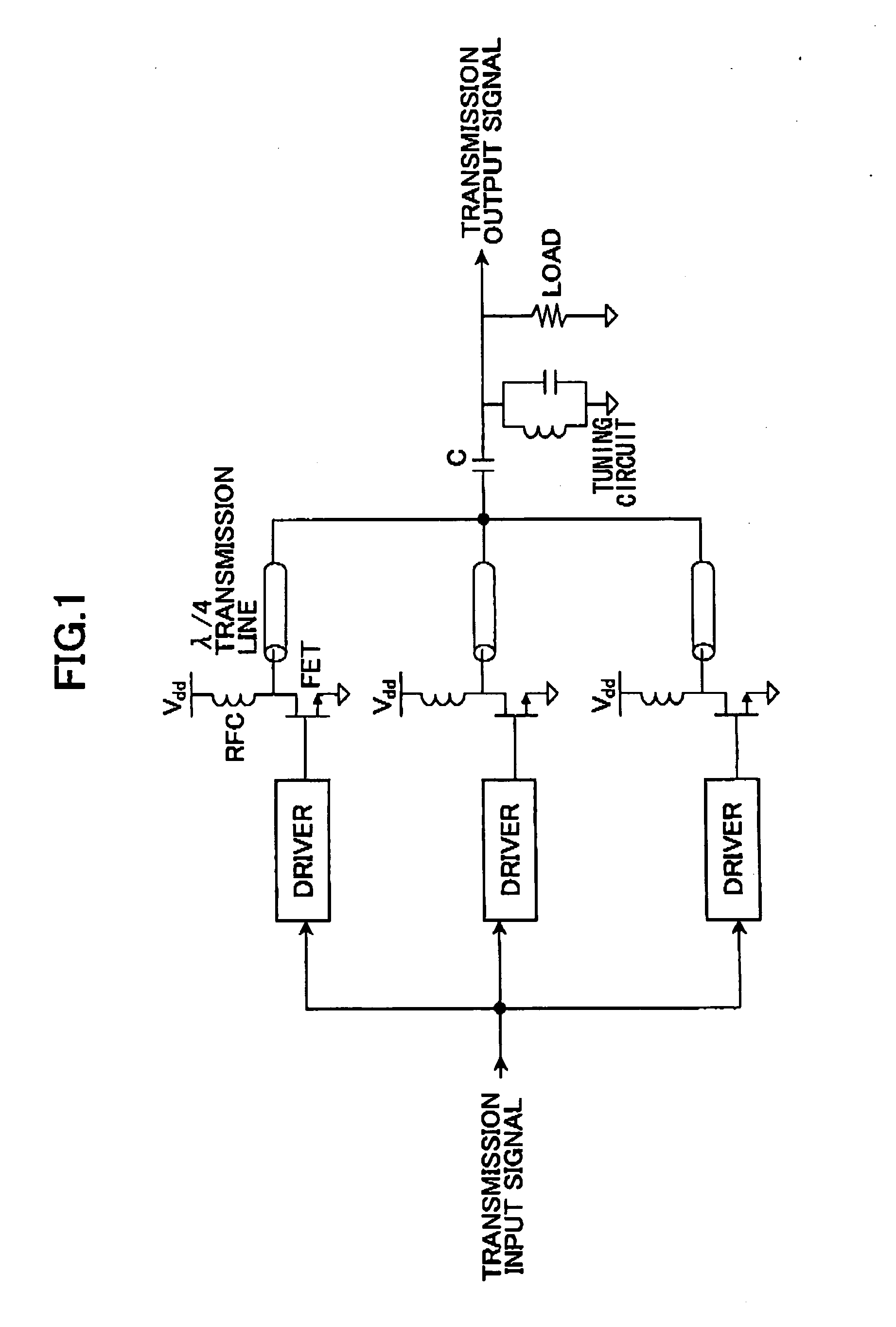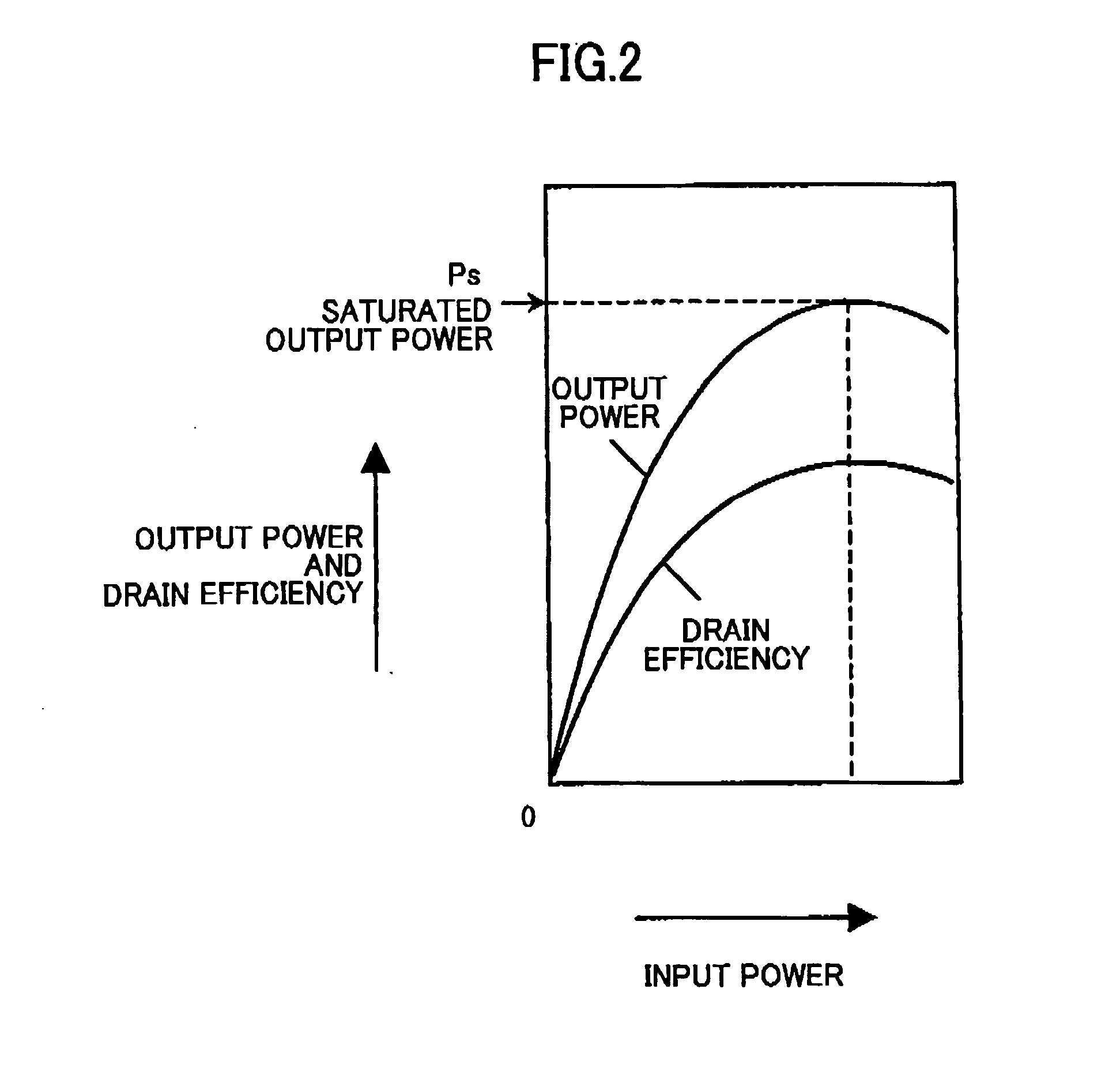Power amplifier
- Summary
- Abstract
- Description
- Claims
- Application Information
AI Technical Summary
Benefits of technology
Problems solved by technology
Method used
Image
Examples
first embodiment
[0045] First Embodiment
[0046]FIG. 4 schematically illustrates a power amplifier 101 according to a first embodiment of the present invention. The power amplifier 101 comprises N power amplifying units 112 (N is an integer larger than 1), N amplitude adjusters 113, an output combining unit 114 and a controller 115. In this embodiment, the amplitude controlling unit 15 comprises the N amplitude adjusters 113 and the controller 115. Power of a transmission input signal 110 is adjusted by each of the amplitude adjusters 113, and each adjusted power level is supplied to the respective one of the power amplifying units 112. The controller 115 controls a power adjusting coefficient of each of the amplitude adjusters 113, and turns on / off each of the N power amplifying units, in response to the input signal 110. The output combining unit 114 combines output signals supplied from power amplifying units 112 that are operating (turned on) to make a power sum, and outputs it as a transmission o...
second embodiment
[0057] Second Embodiment
[0058]FIG. 5 shows a power amplifier 102 according to a second embodiment of the present invention. The power amplifier 102 is the same as the power amplifier 101 except that the power amplifier 102 comprises pre-distorters (PDs) 116 inserted between the amplitude adjusters 113 and the power amplifying units 112. The N pre-distorters, PD 116 and the corresponding N power amplifying units 112 constitute N equivalent linear amplifiers 117. Each of the equivalent linear amplifiers 117 has the same gain G.
[0059]FIG. 9 shows a graph illustrating input-output characteristics (curve a) of each equivalent linear amplifier 117 and input-output characteristic (curve b) of the power amplifying unit 112. The saturation output power of the power amplifying unit 112 is represented by Ps, and the equivalent linear amplifying unit 117 can have a linear input-output characteristic in a range where its output varies from 0 to Ps. The efficiency of the equivalent linear amplif...
third embodiment
[0066] Third Embodiment
[0067]FIG. 6 shows a power amplifier 103 according to a third embodiment of the present invention. The power amplifier 103 is the same as the power amplifier 102 except that in the power amplifier 103, the non-linearity of each of the power amplifying units 112 is compensated for by the amplitude adjusters 113 instead of the PDs 116. In this embodiment, power adjustment amounts for the amplitude adjusters 113 comprise a first adjustment amount for the equivalent linear amplifier 119 for compensating for the non-linearity of the power amplifying units 112, and a second adjustment amount for so adjusting that the transmission input signal is within an input range of the equivalent linear amplifier 119.
[0068] As for each amplitude adjuster 113, an equivalent linear amplifier 119 having a gain of G, a maximum output of Ps is formed, and the second adjustment amount is adjusted in the same manner as the second embodiment shown in FIG. 5. The power of the transmiss...
PUM
 Login to View More
Login to View More Abstract
Description
Claims
Application Information
 Login to View More
Login to View More - R&D
- Intellectual Property
- Life Sciences
- Materials
- Tech Scout
- Unparalleled Data Quality
- Higher Quality Content
- 60% Fewer Hallucinations
Browse by: Latest US Patents, China's latest patents, Technical Efficacy Thesaurus, Application Domain, Technology Topic, Popular Technical Reports.
© 2025 PatSnap. All rights reserved.Legal|Privacy policy|Modern Slavery Act Transparency Statement|Sitemap|About US| Contact US: help@patsnap.com



